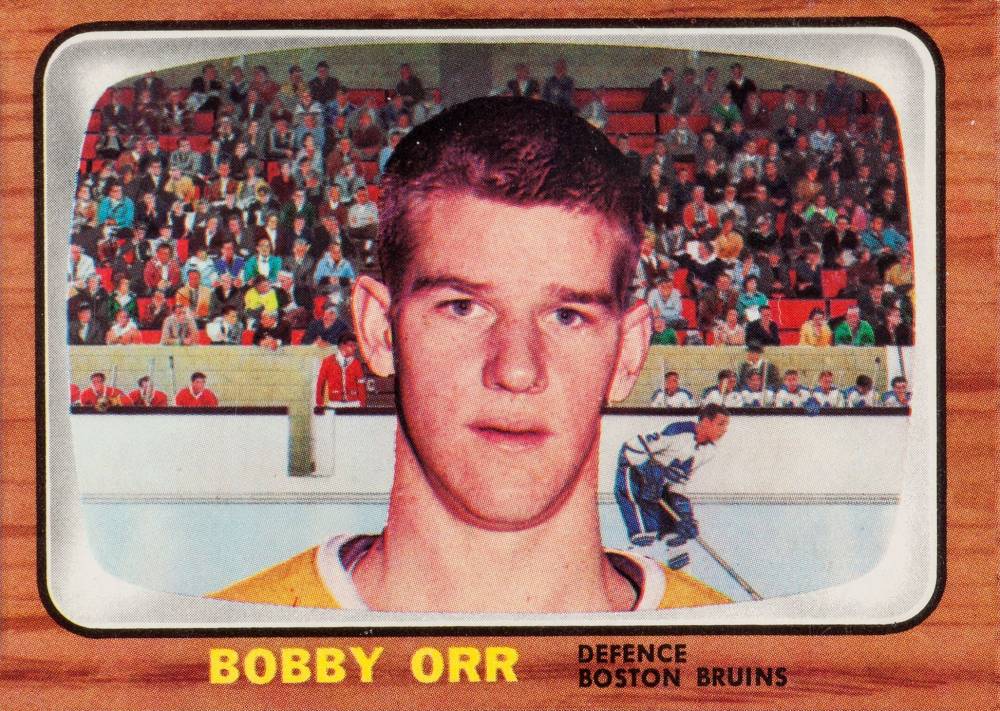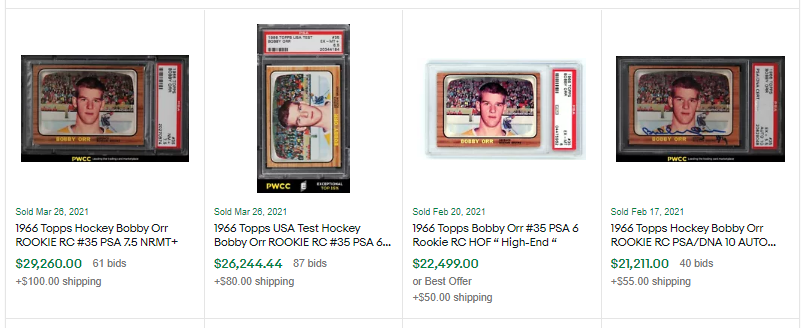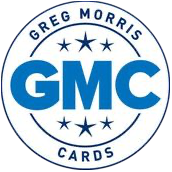In 1966, NBC broadcast the Stanley Cup Final in color on television for the first time ever. That same year, a defenseman named Bobby Orr would forever change the sport, bringing speed, skill, and offense to a position usually focused on defense.
Those two things in tandem led to one of the most iconic hockey cards of all time: the 1966 Topps Bobby Orr rookie card #35.

The notoriety of Bobby Orr as a skilled player grew quickly in his rookie season. Despite his coaches initially wanting him to play center for the Bruins, Orr played 61 games on defense for Boston in his rookie year, scoring 13 goals and 28 assists. He walked away easily with the Calder Trophy (the NHL’s rookie of the year award) and finished 2nd in voting for the Norris Trophy (the NHL’s defenseman of the year award).
That was all it took. A star was born.
Bobby Orr quickly became the best defenseman in the league, winning the Norris Trophy eight consecutive seasons between 1967 and 1975. He added two Stanley Cup championships, one of which was won on his now famous “flying goal.”
Though he now ranks outside of the top 10 in all-time scoring by defenseman in the NHL, he remains one of the most beloved NHL Hall of Famers, which is half the reason why his 1966 Topps rookie is one of the most sought after hockey cards of all time.
The other half of the reason is the card’s unique design.
Borrowing an idea from Bowman’s 1955 baseball card design, Topps had never before designed its card to look like a television set. It was a bold move, and also a nod to the increased availability of televised hockey in the 1960’s. Finally, for the first time in 1966, American audiences were able to experience the speed, physicality, and skill of hockey in full color on television. Why not also give them a color TV hockey card to go with it?
Add to that the emergence of a blazing fast, super skilled, blonde-headed defenseman, playing with a bright yellow “B” on his chest (for “Bobby” and “Bruins” alike), and you have a captivated audience for the better part of a decade.
The background of the card is interesting as well. With Orr tentatively smiling in the foreground, a game between the Canadiens and Maple Leafs is on in the background. Seeing the Maple Leafs and Canadiens on television would have been very familiar in the 1960’s, as those two teams combined to win 22 of the previous 40 Stanley Cup Championships. Though this was a Bobby Orr rookie card, he was not yet more important than two of the most cherished and successful franchises in the history of the league.
But Orr’s expression seems to suggest he knows he’s about to take the Bruins to the next level.
Speaking of “next level”, Orr rookies go for big amounts in high grades. Not quite on the level with the league’s legendary offensive players like Wayne Gretzky or Mario Lemieux, but he’s certainly the highest selling vintage defenseman of all time.

A PSA 7.5 sold this past March for just shy of $30,000, while mid-grade copies typically go for between $20,000 and $30,000 regularly. Lower grades are less expensive, but still a pretty penny: PSA 2’s are averaging $3,300 over the last 12 months.
The 1966 Topps Bobby Orr has been graded at PSA only 829 times. Compare that to the 1979 Topps Wayne Gretzky, which has been graded well over 6,000 times. The low pop report of Orr rookies likely contributes to the high re-sale value. The highest grade it’s received is a PSA 9, which is easily a six figure card, probably no less than $250,000.
Centering is likely the most common issue with this card. The square TV set frame is a dead giveaway for that sort of thing. Chipped edges can also be an issue. But if you can find this card with decent centering and with relatively clean edges, even a mid-grade Bobby Orr rookie is going to return five figures on the secondary market.
With that in mind, however, most hockey card collectors wouldn’t dare part with such an iconic card. Bobby Orr changed the sport forever in the 1960’s, while simultaneously colorized hockey on television became an important part of the sport’s growth in the U.S. Owning this card is like owning a crucial piece of hockey culture: it’s a reminder of an important moment in hockey history and a memory of one of the game’s all-time best players.
Sources: hockey-reference.com, Vintage Card Prices
